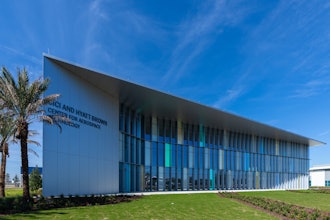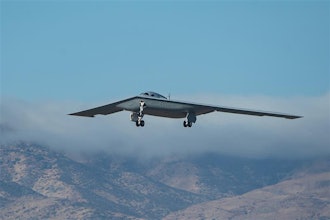
The Interlune payload is a multispectral camera built, tested, and developed in partnership with NASA's Ames Research Center in California's Silicon Valley, whose images will be used to estimate helium-3 quantities and concentration in Moon dirt, or regolith.
Interlune aims to be the first company to commercialize natural resources from space, starting with harvesting helium-3 from the Moon.
Interlune cofounder and CEO, Rob Meyerson said, "This is our first lunar mission and a seminal milestone toward being the first company to harvest natural resources from space. Astrolab's ability to provide reliable mobility on the Moon to partners like Interlune is the quintessential example of the collaboration and innovation building the lunar economy."
Jaret Matthews, founder and CEO, Astrolab, said, "This is exactly the kind of mission we built Astrolab for—delivering breakthrough science to the lunar surface. We're thrilled to be carrying Interlune's multispectral camera to the Moon, and proud to help make this kind of exploration possible."
Founded in 2020, Astrolab is pioneering new ways to explore and operate on distant planetary bodies, focusing on designing, building, and operating a fleet of multi-purpose commercial planetary rovers to extend and enhance humanity's presence in the solar system.
Current knowledge about the quantity and concentration of helium-3 on the Moon is based on data from regolith samples returned to Earth for analysis, such as those collected during the Apollo missions in the 1960s and 1970s. A large sample was collected by Dr. Harrison H. Schmitt, the Interlune cofounder and executive chairman, the only geologist to have ever visited the Moon. In addition to helium-3 (an isotope), data from the samples includes measurements of the quantity of ilmenite, a mineral rich in titanium. The analysis revealed a close correlation between the amount of helium-3 and the amount of titanium in each sample. The ilmenite traps the helium atoms. It was also correlated with the maturity of the regolith, or the length of time it had been on the surface and exposed to the solar wind, which contains helium-3.
Data collected with the multispectral camera will add to this knowledge and refine Interune's helium-3 estimates by producing images that will be used to detect titanium and regolith maturity. With these two measurements, Interlune can predict the amount of helium-3 present without bringing the regolith back to Earth for analysis.
Helium-3, an isotope of helium, is extremely scarce on Earth but abundant on the Moon. The government and industry have been seeking a new and scalable source of helium-3 since the U.S. government identified a severe shortage around 2010. Applications of the isotope include sensors for national security, cooling systems essential for quantum computing, medical imaging, and as a fuel for fusion energy.
Interlune plans to demonstrate its harvesting technology on the Moon in several demonstration missions before returning industrial quantities of lunar helium-3 to Earth for commercial and government customers in the 2030s. Interlune will ultimately harvest other resources such as industrial metals, rare Earth elements, and water to support a long-term presence on the Moon and a robust in-space economy. The company has raised $18 million to date and has garnered support from NASA, the National Science Foundation (NSF), and the U.S. Department of Energy, as well as several commercial customers.






















